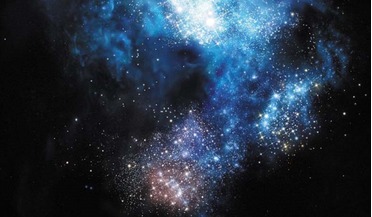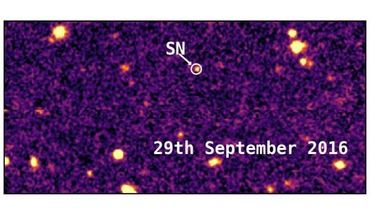 21 March 2016
Using gravitational waves to search for Population III stars
21 March 2016
Using gravitational waves to search for Population III stars
... ago and if they could be observed they would take the form of stellar remnants such as neutron stars, white dwarfs or black holes. With the recent detection of gravitational waves, an international team of astronomers headed by Tilman Hartwig, from...
 21 February 2018
Oldest known superluminous supernova discovered
21 February 2018
Oldest known superluminous supernova discovered
..., scientists could then be able to 'standardise' them as they did with type 1a supernovae. Type 1a supernovae are exploding white dwarf stars and are used in cosmology as typical "standard candles" for measuring the expansion of the Universe. Since...
 25 September 2020
Salty water vapour provides clues to massive star formation
25 September 2020
Salty water vapour provides clues to massive star formation
... solar masses it is likely to turn into a planetary nebula and then live out the rest of its life as a white dwarf as it cools and dims. Stars above eight solar masses tend to end with a bang in a supernova explosion. If the...